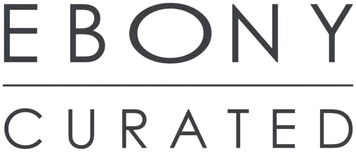Short Stories. by Gavin Rooke
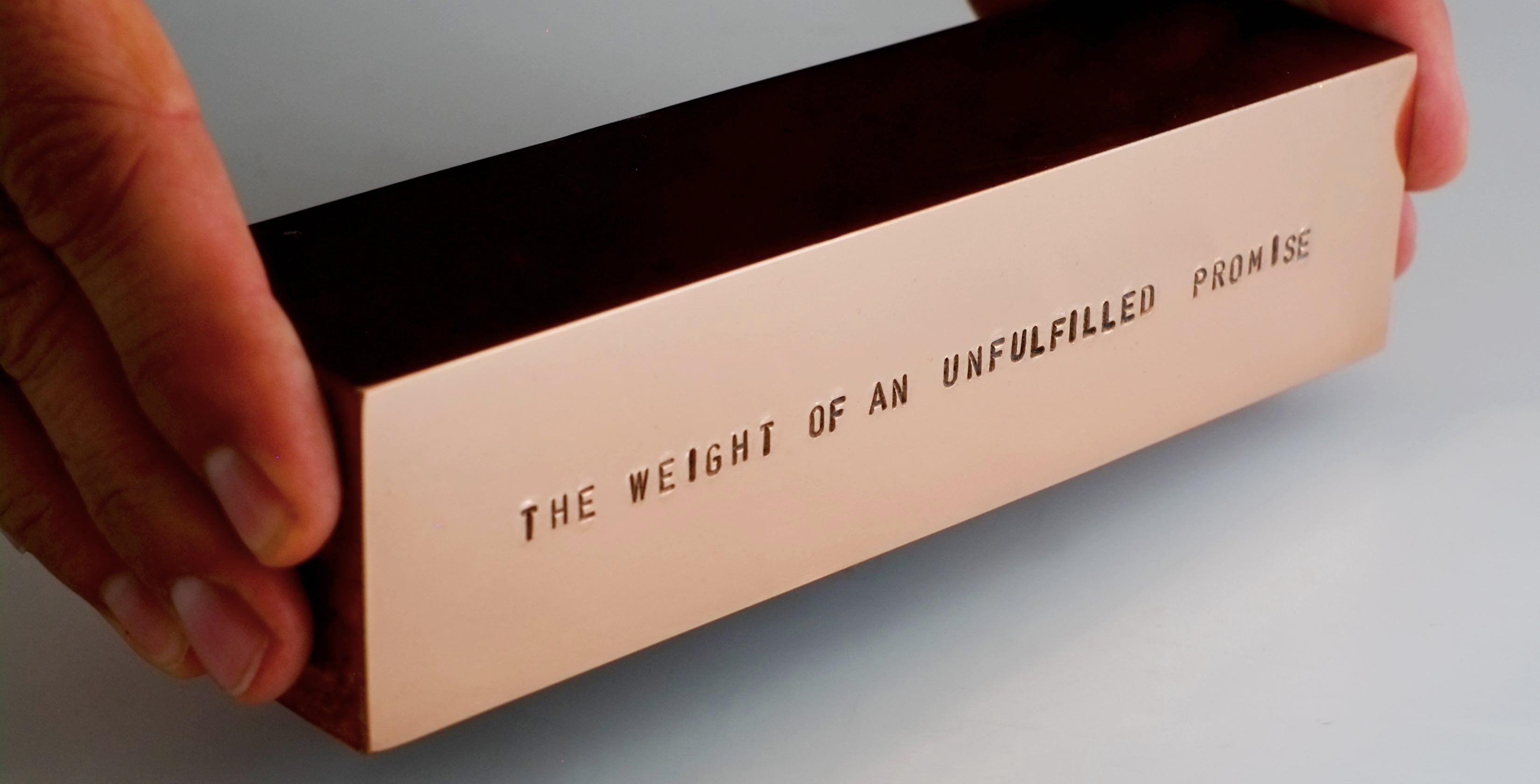
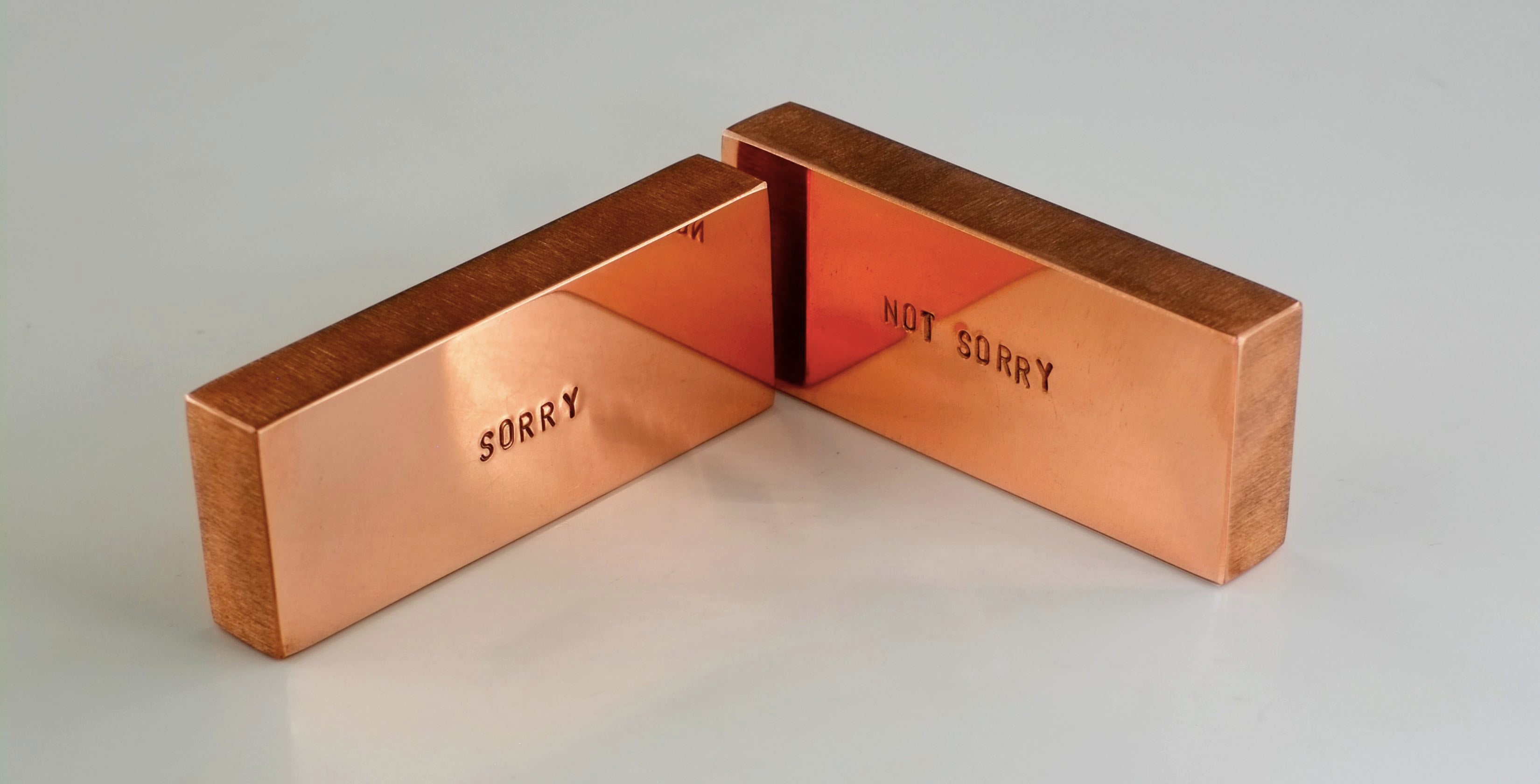
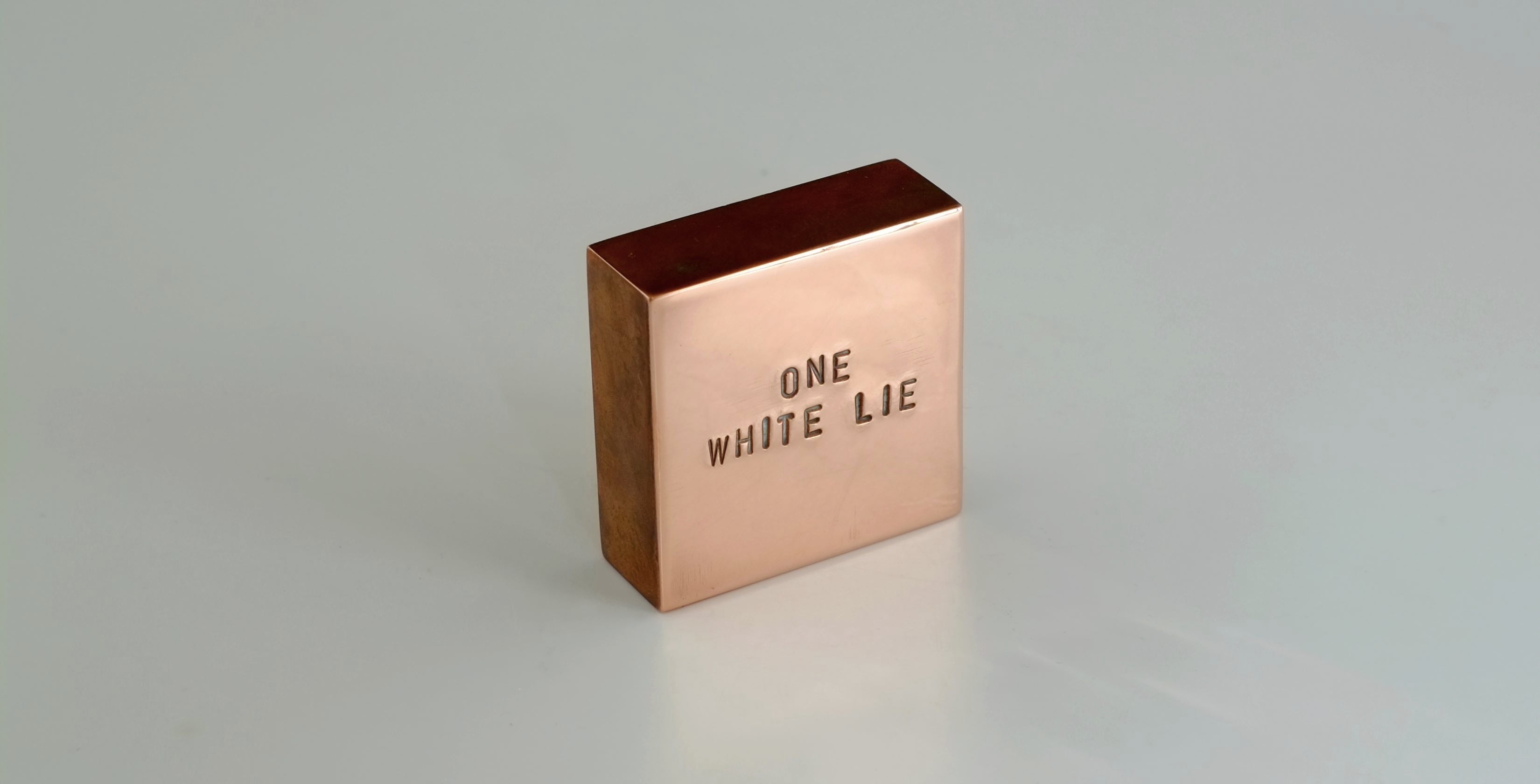
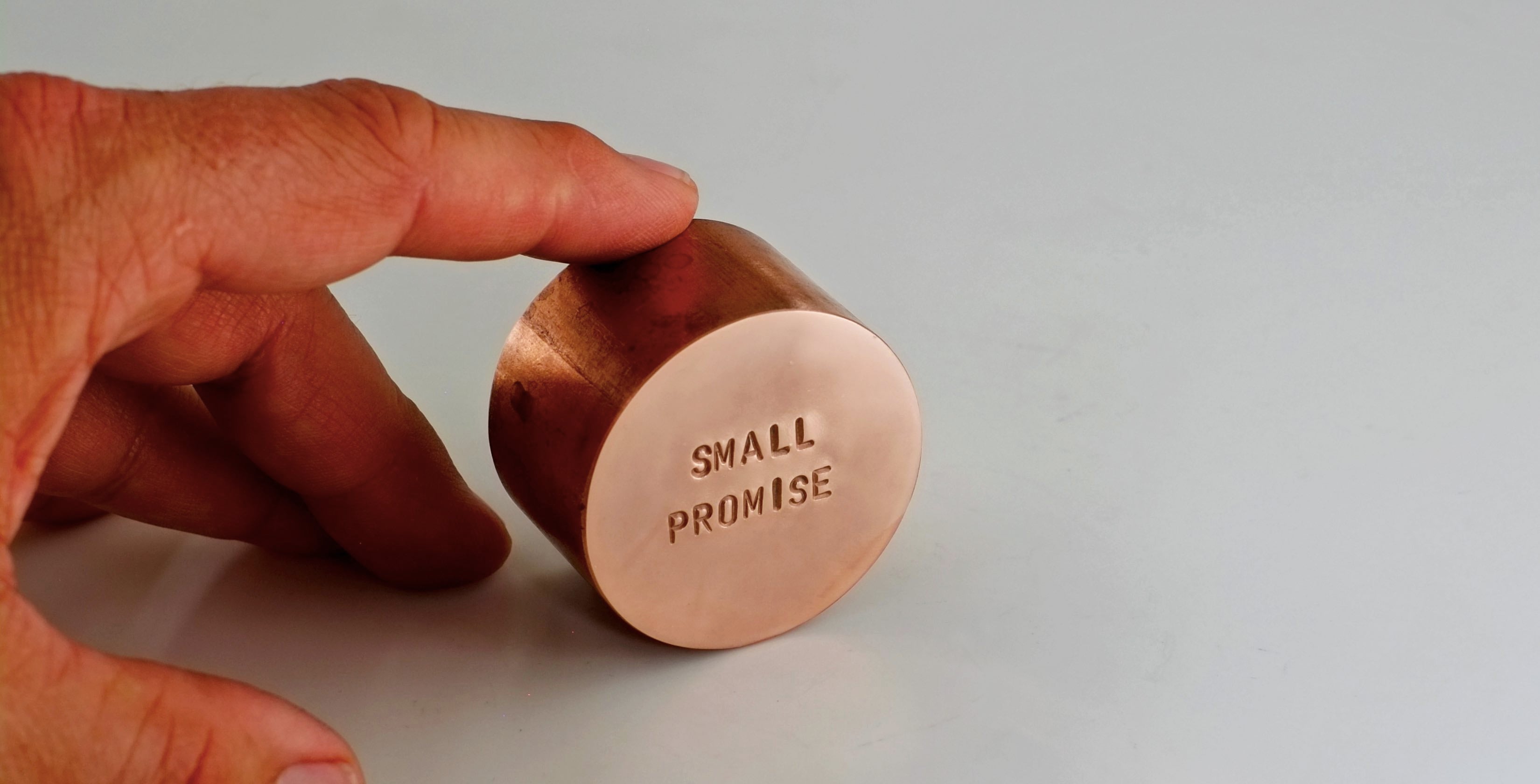
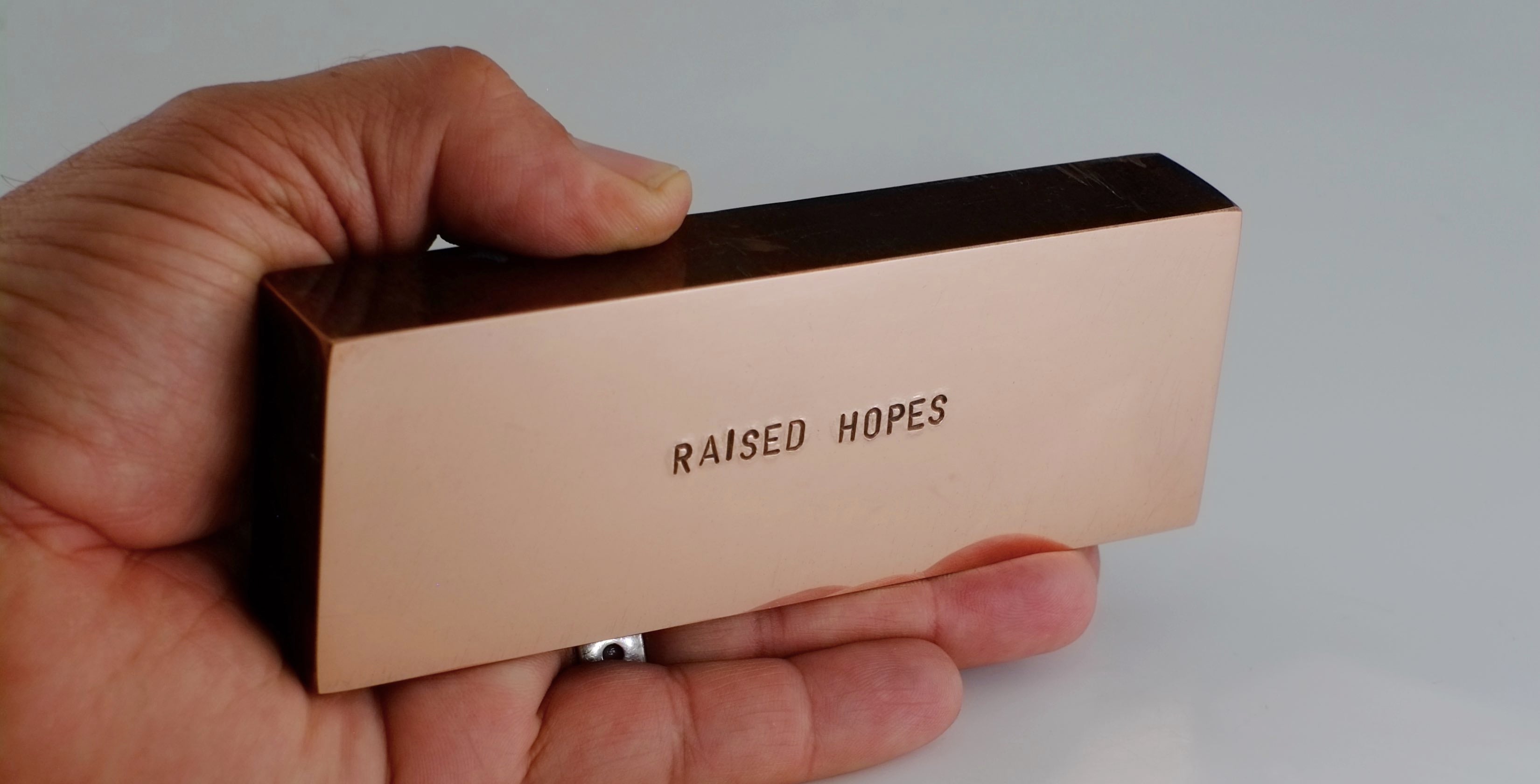
Collection: Short Stories. by Gavin Rooke
EBONY/CURATED Franschhoek Square, Franschhoek
Sunday 14 May 2022
Continues until 30th June 2022
Introduction by Graham Wood
Gavin Rooke’s sculptures in copper might look like simplified geometric forms with simple, everyday phrases stamped onto them, but that’s where the simplicity ends. Both words and matter become complex and unstable in his hands. The reduced forms of the sculptures look at a glance like classic minimalism – precisely the kind of object that rebuffs meanings and resists labels: its artistic significance lying in its ability to refer to nothing outside of itself and be nothing but itself; objects of pure integrity. Yet, he has stamped them with phrases, as if labelling them and making them represent something. Does he want to pin a meaning to the abstract forms?
Not quite.
These sculptures are not just to be looked at. They’re tactile. They’re to be lifted – if they can be – and weighed in the hand; turned over. You need to feel the weight of the copper to intuit the weight of the words stamped on them. By labelling the sculpture, it’s almost as if Rooke is dabbling in a kind of artistic alchemy. At first, the phrases he has chosen might seem familiar: THE WEIGHT OF THE WORLD or THE WEIGHT ON YOUR MIND.
In much of our language, there’s a sense of the physical burden that emotions have: emotional baggage; a heavy heart. There are other abstractions that weigh on us: unfulfilled promises, regrets, lies or words unsaid. Rooke has homed in on these phrases. Some of those phrases are well-travelled – some even outright clichés that have become dull and trivial with overuse and familiarity. They’ve come adrift from their meanings, leaving empty signs and symbols – marks on a page.
When you pick up one of these works, however, its weight comes with a little shock of surprise. Solid copper is unexpectedly heavy. The metaphorical weight of the emotion is experienced physically with a tug of gravity and it gains a kind of physical equivalency. You feel it in your body.
This metamorphosis from word to flesh is more explicit in a work such as A POUND OF FLESH. In fact, there are two works on this exhibition bearing that title, one small and one large. The small work weighs a pound. The large one occupies the volume of a pound of flesh, but weighs almost ten times as much.
In both instances, you can’t help but imagine the weight of the artwork as the weight of your own flesh. Does a pound weigh that much? “The almost onerous weight conveys the inhuman nature of the phrase,” says Rooke.
It’s important to remember, however, that the weight in the title isn’t actually the weight of flesh. It refers to the phrase, “A pound of flesh”, and the symbolic weight of those words. It’s the words that become flesh as you lift the work.
Seen like this, rather than the words nailing down the meaning of the matter, Rooke seems to be harnessing the weight of matter to sidestep the conventional business of reading and delivering the shock of their meaning on an almost physical, bodily level – a pure version of meaning experienced through sensation.
There’s a contradictory impulse to restore meaning to the words, to reconnect them with their referents, and a kind of mistrust of words and their failings.
What, however, does the weight itself ultimately mean?
On one level, our personal associations attach to the phrases on the copper and its weight. The sculptures embody our own hopes and burdens. The exhibition title, Short Stories, is a wry reference to the volumes that lie beneath these simple phrases. THE WEIGHT OF YOUR UNFULFILLED AMBITIONS might encapsulate a life story – a novel’s worth – in a simple block of copper.
But our reaction also depends on the weight itself. Even the same words seem to mean something different if they’re on a different-sized sculpture.
AN OUNCE OF REGRET, for example, means something different when it is big and heavy from when it is small and easy to lift. And when combined with their twin works, AN OUNCE OF RESPECT, more questions arise. What is the relationship between regret and respect? What does it mean if regret is heavy and respect light, and vice versa?
In the lighter works, which are both physically smaller and perhaps less serious, Rooke plays another game with the quality of the copper. In these, the burnished surface acts as a mirror. No matter which side of the little ingot faces you, the reflection on its surface behind the words affirms the truth. In a work like IT’S ME. IT’S NOT YOU, the sculpture gives the lie to the words stamped on its surface. It undermines and contradicts them. “It’s always you,” says Rooke. In this case, the artwork doesn’t give weight to the words, but reflects a truth behind them.
Another work, such as TO HAVE AND TO HOLD, does something similar. This bevelled plate is impossible to grip and lift, as if glued down by gravity. You cannot have or hold the words or meanings these works represent, or anything else, for that matter. The sculptural object undermines the promise of the words.
These works, however, engage with irony and double entendre: the ways in which the meanings of words and phrases double, or multiply, sometimes meaning two things at once, sometimes even opposites. And that’s where these sculptural objects cross over into the realm of literature. As much as they are artworks, they are also short stories. They might arise from frustration with the artificiality of words and long for a language that delivers the truth uncompromised, but they ultimately reveal a faith in a multiplicity of meanings, in the capacity of language to spin out endless possibilities, new expressions and expanded potential.
And that is a literary faith.
Works on exhibition
-
THE WEIGHT OF INSIGNIFICANCE
Vendor:Gavin Rooke (1971- )Regular price R 19,500.00Regular priceUnit price / per -
THE WEIGHT OF AN UNFULFILLED PROMISE | Ed. 1 of 3
Vendor:Gavin Rooke (1971- )Regular price R 19,500.00Regular priceUnit price / per -
THE WEIGHT OF AN UNFULFILLED PROMISE | Ed. 1 of 3
Vendor:Gavin Rooke (1971- )Regular price R 19,500.00Regular priceUnit price / per -
IT'S ME. IT'S NOT YOU | Ed. 1 of 3
Vendor:Gavin Rooke (1971- )Regular price R 5,900.00Regular priceUnit price / per -
A POUND OF FLESH (L) | Ed. 3 of 3
Vendor:Gavin Rooke (1971- )Regular price R 19,500.00Regular priceUnit price / per -
THE WEIGHT OF AN UNFULFILLED PROMISE | Ed. 3 of 3
Vendor:Gavin Rooke (1971- )Regular price R 19,500.00Regular priceUnit price / per -
AN OUNCE OF REGRET (L) | Ed. 2 of 3
Vendor:Gavin Rooke (1971- )Regular price R 19,500.00Regular priceUnit price / per -
THE WEIGHT OF YOUR UNFULFILLED POTENTIAL | Ed. 2 of 3
Vendor:Gavin Rooke (1971- )Regular price R 18,500.00Regular priceUnit price / per -
RAISED HOPES | Ed. 1 of 3
Vendor:Gavin Rooke (1971- )Regular price R 12,500.00Regular priceUnit price / per -
AN OUNCE OF RESPECT (S) | Ed. 1 of 1
Vendor:Gavin Rooke (1971- )Regular price R 5,900.00Regular priceUnit price / per -
AN OUNCE OF REGRET (L) | Ed. 1 of 3
Vendor:Gavin Rooke (1971- )Regular price R 19,500.00Regular priceUnit price / per -
AN OUNCE OF REGRET (S) | Ed. 1 of 2
Vendor:Gavin Rooke (1971- )Regular price R 5,900.00Regular priceUnit price / per -
AN OUNCE OF RESPECT (L) | Ed. 1 of 3
Vendor:Gavin Rooke (1971- )Regular price R 18,500.00Regular priceUnit price / per -
TO HAVE AND TO HOLD | Ed. 1 of 2
Vendor:Gavin Rooke (1971- )Regular price R 16,800.00Regular priceUnit price / per -
THE WEIGHT OF INSIGNIFICANCE | Ed. 1 of 3
Vendor:Gavin Rooke (1971- )Regular price R 19,500.00Regular priceUnit price / per -
ONE WHITE LIE | Ed. 1 of 2
Vendor:Gavin Rooke (1971- )Regular price R 5,900.00Regular priceUnit price / per -
SMALL PROMISE | Ed. 1 of 3
Vendor:Gavin Rooke (1971- )Regular price R 5,900.00Regular priceUnit price / per -
THE ONE YOU ARE LOOKING FOR IS YOU | Ed. 1 of 6
Vendor:Gavin Rooke (1971- )Regular price R 4,800.00Regular priceUnit price / per -
SORRY. NOT SORRY | Ed. 1 of 3
Vendor:Gavin Rooke (1971- )Regular price R 5,900.00Regular priceUnit price / per -
IT'S ME. IT'S NOT YOU | Ed. 2 of 3
Vendor:Gavin Rooke (1971- )Regular price R 5,900.00Regular priceUnit price / per -
THE WEIGHT OF THE WORLD | Ed. 1 of 3
Vendor:Gavin Rooke (1971- )Regular price R 52,000.00Regular priceUnit price / per -
THE WEIGHT ON YOUR MIND | Ed. 1 of 2
Vendor:Gavin Rooke (1971- )Regular price R 19,500.00Regular priceUnit price / per -
THE WEIGHT OF YOUR UNFULFILLED POTENTIAL | Ed. 1 of 3
Vendor:Gavin Rooke (1971- )Regular price R 18,500.00Regular priceUnit price / per -
THE WEIGHT OF YOUR UNFULFILLED AMBITIONS
Vendor:Gavin Rooke (1971- )Regular price R 42,500.00Regular priceUnit price / per -
A POUND OF FLESH (S) | Ed. 1 of 3
Vendor:Gavin Rooke (1971- )Regular price R 5,900.00Regular priceUnit price / per -
A POUND OF FLESH (L) | Ed. 2 of 3
Vendor:Gavin Rooke (1971- )Regular price R 19,500.00Regular priceUnit price / per
